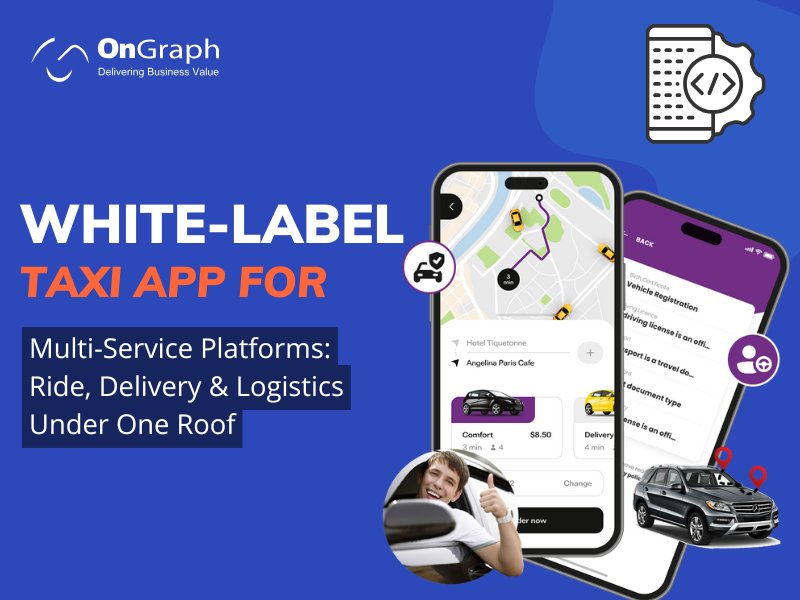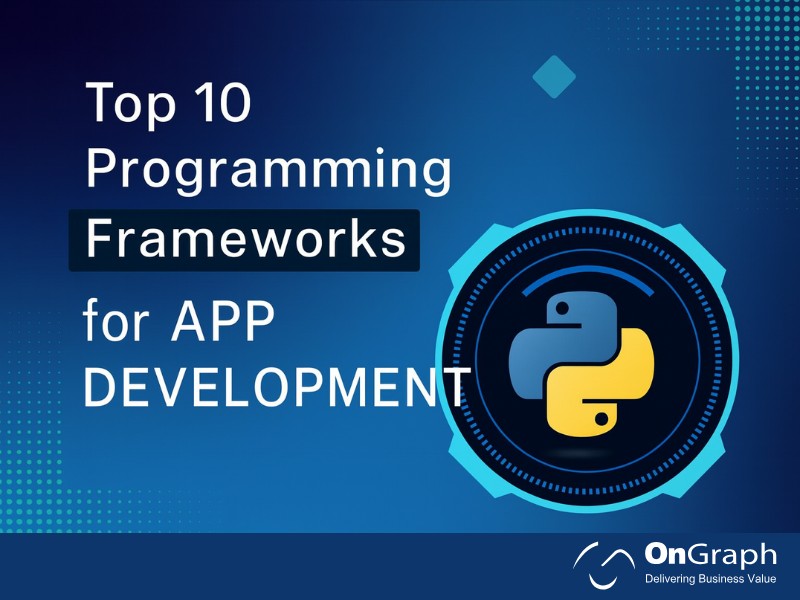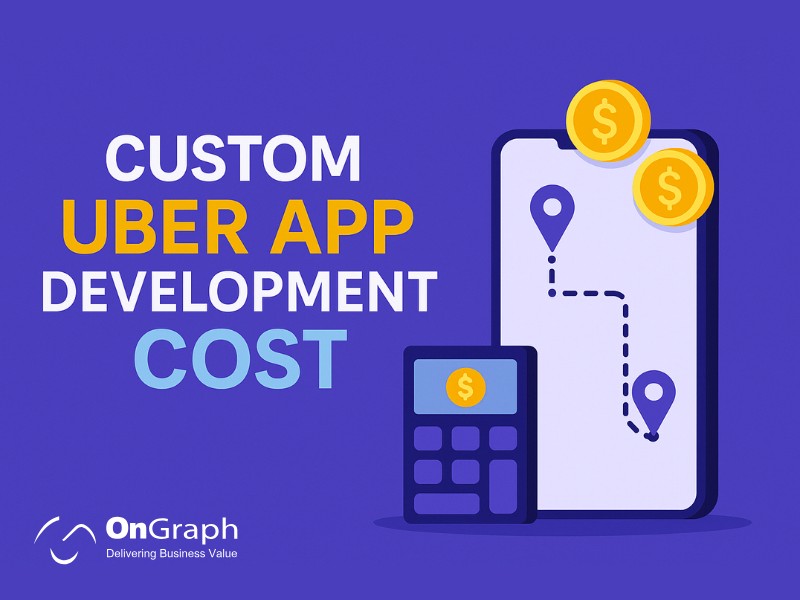In this article
- The Evolution of Taxi Apps into Multi-Service Platforms
- Why Multi-Service Taxi Apps Are the Future of Urban Mobility?
- Core Components of a White-Label Taxi App for Multi-Service
- How to Create a Taxi App That Supports Multi-Service Operations?
- Case Study: How Multi-Service Taxi Apps Drive Success
- Common Taxi App Deployment Challenges (and How to Overcome Them)
- Future Outlook: The Super-App Revolution
- Conclusion: The Fast Track to Mobility Transformation
The on-demand mobility market is shifting toward super apps — unified platforms offering multiple services under one ecosystem. A White-Label Taxi App for Multi-Service allows entrepreneurs to combine ride-hailing, delivery, courier, and logistics solutions within a single, seamless interface.
According to Statista (2025), the global ride-hailing market is valued at $327 billion, projected to reach $490 billion by 2029. Meanwhile, the last-mile delivery market will exceed $200 billion by 2026.
These two industries are now converging — giving rise to multi-service taxi apps that deliver convenience, speed, and scalability.
Businesses adopting this model not only reduce operational costs but also increase driver utilization rates by 40% and customer retention by 25%.
A white-label taxi app acts as the perfect foundation for startups aiming to scale quickly, without reinventing the wheel.
The Evolution of Taxi Apps into Multi-Service Platforms
Traditional taxi booking apps began as simple connectors between passengers and drivers. Over the past decade, they’ve evolved into smart mobility ecosystems that manage rides, deliveries, and fleet logistics through automation.
This transformation happened because of several market demands:
- Customers wanted everything — rides, food, packages — in one app.
- Drivers wanted better income opportunities through multi-tasking.
- Entrepreneurs wanted to maximize ROI from their existing fleet.
Forward-thinking companies now use a white label taxi booking app framework to add courier, parcel, and logistics services — without needing to build each service independently.
The result? A White-Label Taxi App for Multi-Service that enables complete mobility control — from booking rides to tracking deliveries.
Why Multi-Service Taxi Apps Are the Future of Urban Mobility?
1. Increased Earning Potential
Fleet owners and mobility startups can use the same network of drivers and vehicles across multiple verticals — from passenger transport to logistics and delivery. This boosts daily earnings without increasing fleet size.
2. Faster Market Penetration
With white label taxi app development, startups can enter new service categories or regions in weeks. A pre-tested app structure means minimal risk, faster testing, and immediate scalability.
3. User Retention Through Convenience
Super apps like Grab, Bolt, and Gojek have proven that offering multiple services in one place leads to higher app engagement and retention. A single login, payment method, and wallet create trust and ease of use.
4. Lower Technology Costs
Building a platform from scratch can cost $40,000–$150,000. A white label taxi app can reduce costs by up to 60%, allowing new businesses to start lean and scale smart.
Core Components of a White-Label Taxi App for Multi-Service
When integrating ride, delivery, and logistics features, it’s crucial that your app architecture is scalable and intuitive. Here are the Top 10 Modern Taxi App Features that make it work:
- Dynamic Service Categories — Users can choose ride, courier, delivery, or trucking from one dashboard.
- AI-Based Matching System — Smart algorithms allocate the right driver for each request type.
- Fleet Management Dashboard — Admins can track vehicles, performance, and real-time analytics.
- In-App Wallet & Payment Integration — Supports UPI, cards, and mobile payments securely.
- Real-Time GPS Tracking — Both customers and admins track rides and packages easily.
- Driver Document Verification — Integrated systems like Checker APIs help automate driver onboarding.
- Multi-Language & Multi-Currency Support — Essential for cross-border expansion.
- Emergency SOS & Ride Code Verification — Enhances safety and trust.
- Automated Commission System — Handles split payments between admin and drivers.
- Cloud-Based Scalability — Handles high traffic during festive or peak hours.
How to Create a Taxi App That Supports Multi-Service Operations?
Building a Taxi App for Multi-Service requires proper planning, development expertise, and a clear roadmap. Here’s how successful brands approach it:
Step 1: Define Your Service Mix
Start by choosing your primary services — rides and courier delivery are ideal to begin. Add logistics and other on-demand modules later.
Step 2: Select a Proven White-Label Solution
Choose a taxi app development company that offers scalable white-label frameworks. This lets you launch a white-label taxi app in weeks, not months.
Step 3: Customize for Your Brand
Add your colors, logos, and language preferences. Define the rules for commission, pricing, and service zones.
Step 4: Integrate Region-Specific Gateways
Local payment gateways, compliance APIs, and fleet tax integrations help you launch your own e-hailing app in South Africa or anywhere globally.
Step 5: Conduct Pilot Tests
Run soft launches in a few cities to identify taxi app deployment challenges early — like location accuracy or payment delays.
Step 6: Scale and Expand
Once stable, introduce delivery partners, warehouse logistics, and new fleet categories.
Case Study: How Multi-Service Taxi Apps Drive Success
A mobility startup in East Africa adopted a white label ride sharing app framework to merge passenger rides with courier services. Within six months:
- Average driver earnings grew by 38%.
- Customer acquisition cost dropped by 27%.
- Cross-service bookings increased by 42%.
These results demonstrate the business impact of combining taxi and logistics services under a single app. The white-label approach helped them launch quickly and adapt locally — avoiding months of custom development.
Common Taxi App Deployment Challenges (and How to Overcome Them)
- App Store Approvals: Use official branding guidelines and test across devices.
- Payment Integration Delays: Choose pre-verified gateways like Stripe or Razorpay.
- Driver Verification: Integrate APIs to automate document checks and reduce fraud.
- GPS Accuracy Issues: Implement multi-layered mapping APIs (Google Maps + Mapbox).
- Scaling During Peak Hours: Use cloud autoscaling (AWS, GCP) to handle traffic surges.
An experienced taxi app development company mitigates these challenges through pre-built modules and proven deployment strategies.
Future Outlook: The Super-App Revolution
The next phase of urban mobility will belong to super apps — platforms that unify transport, logistics, and payments.
By 2027, over 70% of new mobility startups will rely on white-label taxi app solutions to build such ecosystems.
As EV adoption and AI routing grow, multi-service taxi apps will offer smarter routing, lower emissions, and better driver incentives.
A White-Label Taxi App for Multi-Service isn’t just a cost-saving choice — it’s the foundation of the next generation of mobility innovation.
Conclusion: The Fast Track to Mobility Transformation
If your goal is to dominate the ride-hailing and logistics market, a White-Label Taxi App for Multi-Service is your most strategic move.
It blends affordability, flexibility, and scalability, allowing entrepreneurs to launch a white-label taxi app in weeks and compete with top industry players.
By partnering with a skilled taxi app development company, you can future-proof your operations and capture emerging market opportunities — all within one intelligent app ecosystem.
Ready to Launch Your Multi-Service Taxi Platform? Let’s Build It Together
FAQs
It’s a customizable app that combines ride-hailing, courier delivery, and logistics within one system using a ready-made white-label framework.
You can launch a white-label taxi app in weeks — typically 4–6 weeks — with a reliable development partner.
Higher fleet utilization, increased revenue streams, lower development costs, and better customer engagement.
Yes. A professional taxi app development company ensures local compliance for each operating region.
Absolutely. You can integrate EV rides, freight logistics, and even e-bike rentals later.
All white-label taxi app solutions use encrypted payment gateways and GDPR-compliant storage protocols for data security.
About the Author
Let’s Create Something Great Together!
Latest Blog
















